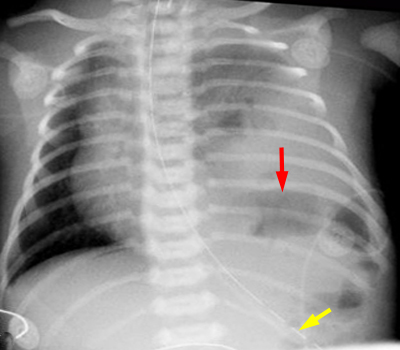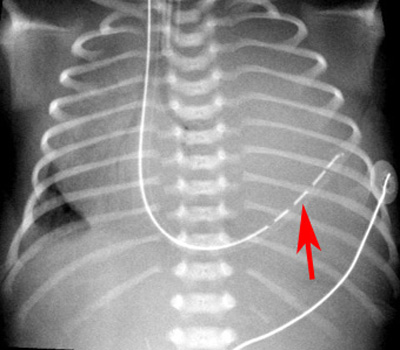Pediatric Radiology > Chest > Respiratory Neonatal Distress > Surgical Respiratory Neonatal Distress - CDH
Surgical Respiratory Neonatal Distress
![]()
|
Congenital Diaphragmatic Hernia (CDH)
|
 |
 |
Postnatal CXR demonstrates a mass in the lower left chest with shift of the mediastinum. The presence of bowel gas (red arrow) indicates the mass is due to a diaphragmatic hernia. In this case, the stomach remains in the abdominal cavity as indicated by the position of the nasogastric tube (yellow arrow). |
CXR demonstrates a mass in the left chest with shift of the mediastinum. Although no bowel gas is identified, the position of the nasogastric tube (red arrow) indicates the stomach is located in the thoracic cavity. |